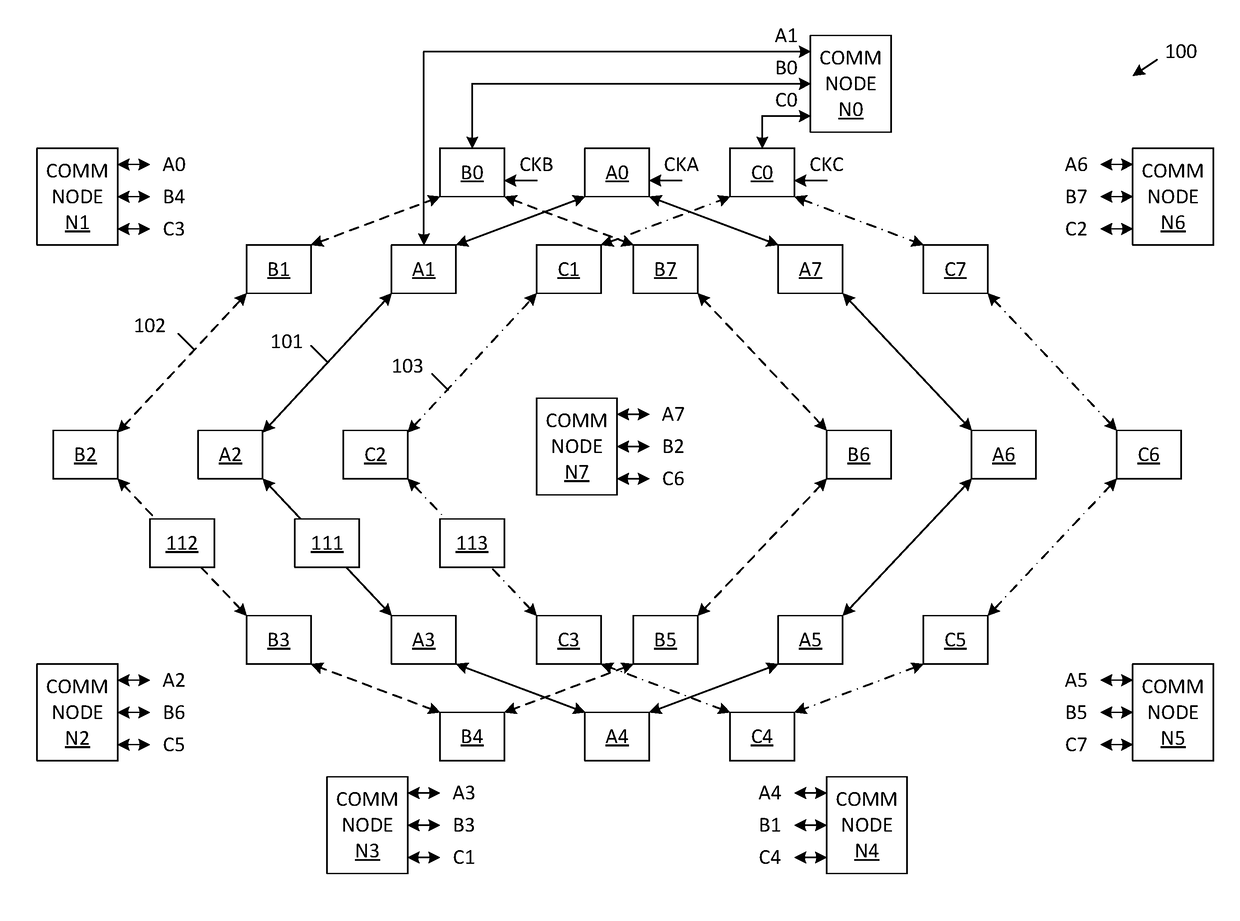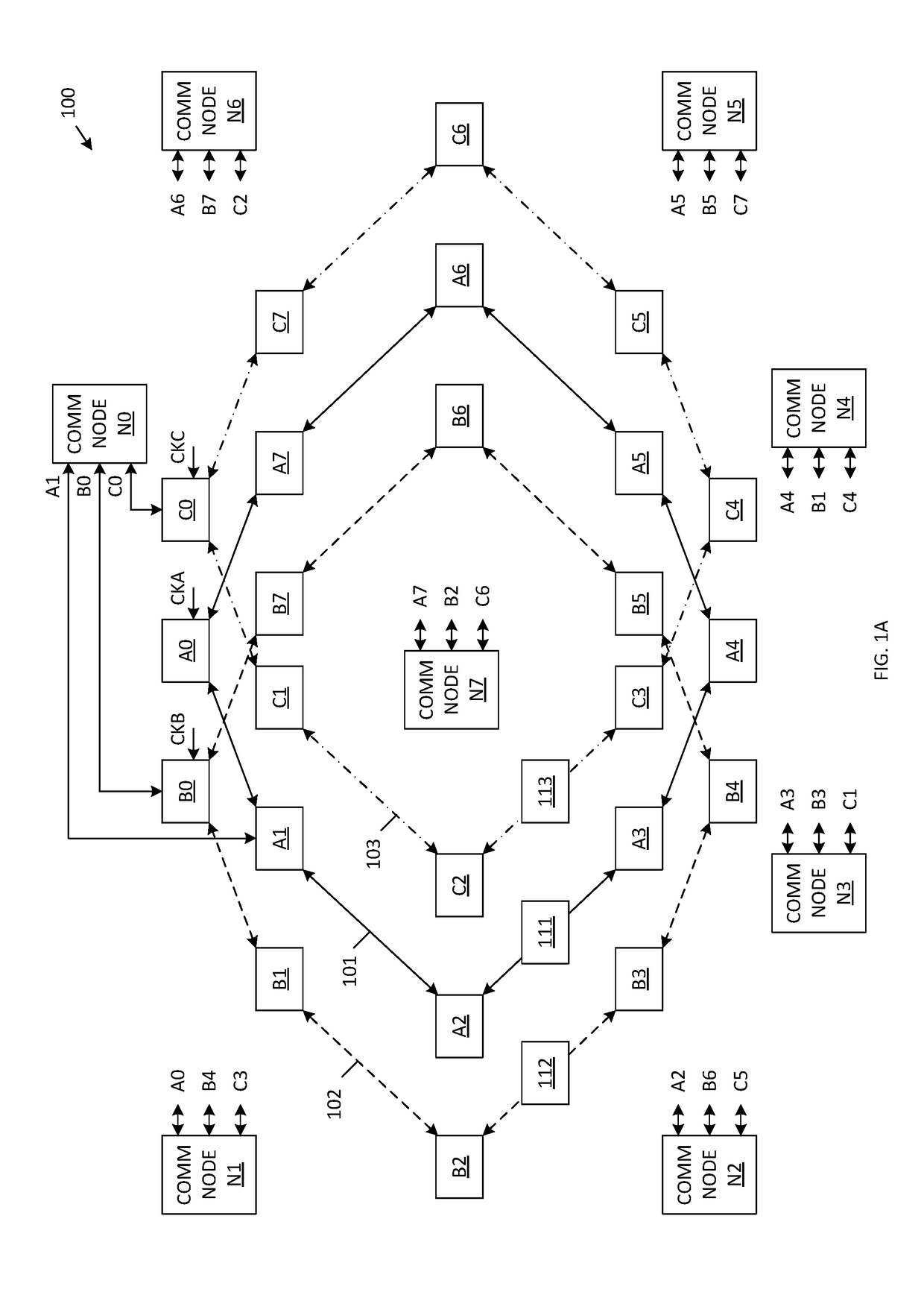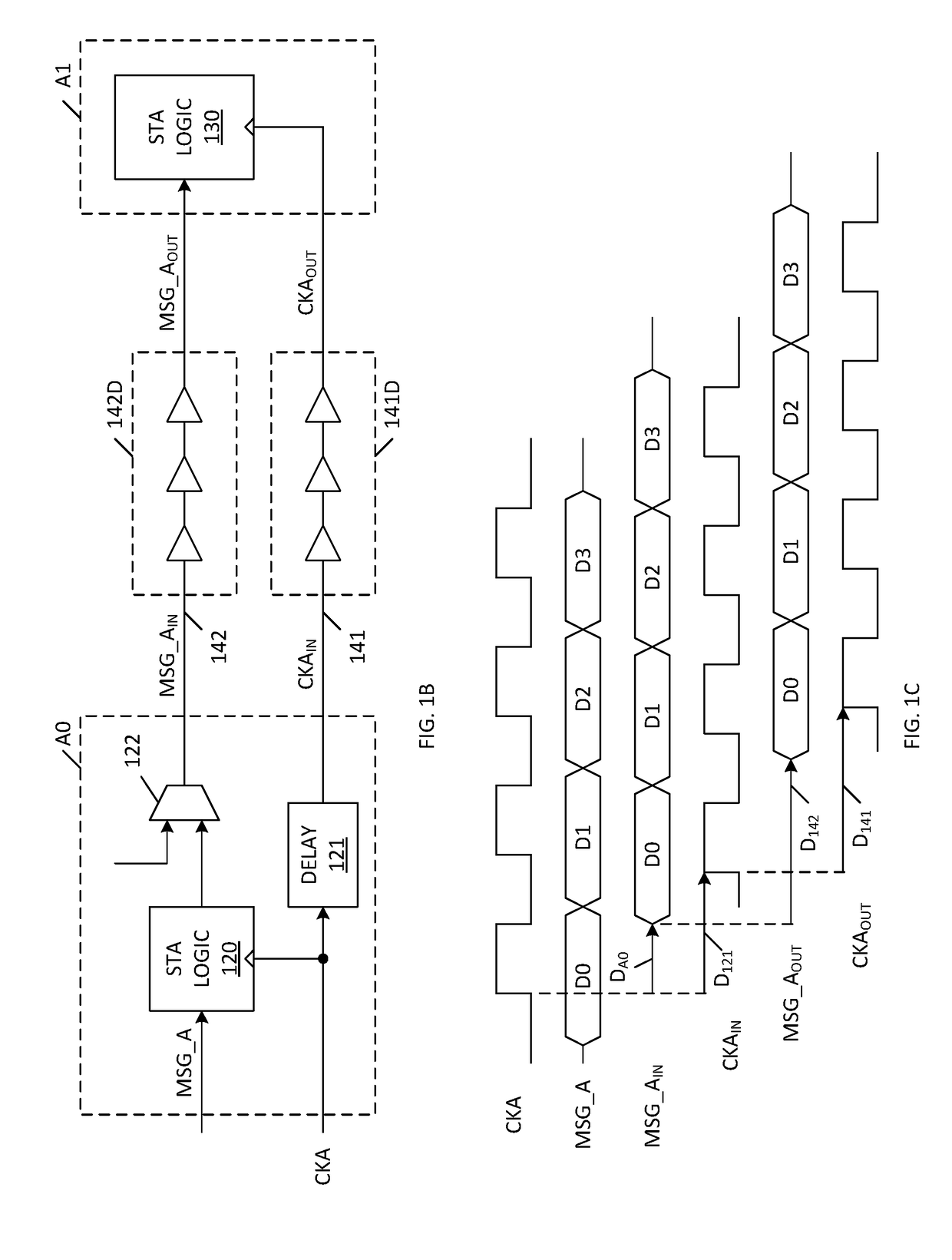Permutated Ring Network
a ring network and network technology, applied in data switching networks, loop networks, multiplex communication, etc., can solve the problems of increasing the number of intra-chip communication nodes, the demand for on-chip data bandwidth, and the scaling of problems, so as to achieve the effect of reducing the challenge of clock distribution
- Summary
- Abstract
- Description
- Claims
- Application Information
AI Technical Summary
Benefits of technology
Problems solved by technology
Method used
Image
Examples
Embodiment Construction
[0031]In general, the present invention provides a permutated ring network architecture that includes a plurality of bi-directional source-synchronous communication rings that are shared among a plurality of network nodes. A source synchronous technique is used to mitigate the clock distribution challenges, wherein a transmitting node sends both a clock and data to a receiving node. The receiving node latches the data using the received clock. The clock fan-out is limited to the size of the data bus width. The clock skew is set by the delay relationship between the clock and the corresponding data. Note that the source synchronous technique will only work with a point-to-point interconnect (e.g., a ring network). Numerous on-chip interconnect resources are required to implement a point-to-point network. However, Moore's law predicts that the number of metal layers will scale upward, the metal pitch will decrease, and more wires will be available per unit area as process technologies...
PUM
 Login to View More
Login to View More Abstract
Description
Claims
Application Information
 Login to View More
Login to View More - R&D
- Intellectual Property
- Life Sciences
- Materials
- Tech Scout
- Unparalleled Data Quality
- Higher Quality Content
- 60% Fewer Hallucinations
Browse by: Latest US Patents, China's latest patents, Technical Efficacy Thesaurus, Application Domain, Technology Topic, Popular Technical Reports.
© 2025 PatSnap. All rights reserved.Legal|Privacy policy|Modern Slavery Act Transparency Statement|Sitemap|About US| Contact US: help@patsnap.com



